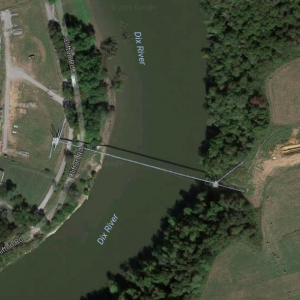The Stream, December 9: Canada, U.S. To Change Lake Ontario Water Management
The Global Rundown
Canada and the United States will change the way they manage water levels on Lake Ontario to restore wetlands. Irrigators in South Australia warn that unreliable electricity systems and high prices are putting their water supplies at risk. Scientists found evidence that small fish along the U.S. East Coast have evolved to withstand high pollution levels. The U.S. House of Representatives passed a bill authorizing water projects to help Flint, Michigan and drought-hit areas of California. New draft permits released by Minnesota would put stricter controls on water pollution at mine waste sites.
“You can [have] all the water in the river you like, but if we can’t pump it, the [Basin Plan] is a pointless exercise and it will all go to environmental water.” –Andrew Kassebaum, deputy mayor of the Berri Barmera Council in South Australia, calling attention to blackouts and high electricity prices that farmers in the state say jeopardize their water deliveries from the Murray-Darling River system. (ABC)
In context: Explore Circle of Blue’s ‘Biggest Dry’ project to learn how the Millennium Drought fundamentally altered water management in the Murray-Darling River Basin.
By The Numbers
$10 billion Cost of domestic water infrastructure projects authorized in a bill passed by the U.S. House of Representatives on Thursday. The bill, which still awaits approval from the Senate, would allow lawmakers to allocate $170 million to aid Flint, Michigan and $558 million to help alleviate drought conditions in California. Associated Press
1992 Year the permit expired for a wastewater pit at the Minntac iron ore mine in Minnesota, where environmental groups say it has contaminated nearby streams and groundwater. A lawsuit against the state over its failure to update the permit was dropped after regulators released a new draft permit with more stringent pollution controls. Star Tribune
Science, Studies, And Reports
Genetic mutations have allowed certain populations of killifish to live in highly polluted coastal marshes and estuaries in the eastern United States, according to a study published in the journal Science. High rates of genetic diversity may be the key to the species’ quick evolution, which allowed them to withstand pollution levels up to 8,000 times higher than before, according to researchers. National Geographic
On The Radar
Canada and the United States approved a plan that will change the way they manage water levels on Lake Ontario, increasing water variation to restore thousands of hectares of wetlands along the lake and the upper St. Lawrence River. The water management scheme, known as Plan 2014, will take effect in January. MLive
In context: Learn how Plan 2014 was developed, and what it means for wetlands and communities in the Lake Ontario basin.
A news correspondent for Circle of Blue based out of Hawaii. She writes The Stream, Circle of Blue’s daily digest of international water news trends. Her interests include food security, ecology and the Great Lakes.
Contact Codi Kozacek





